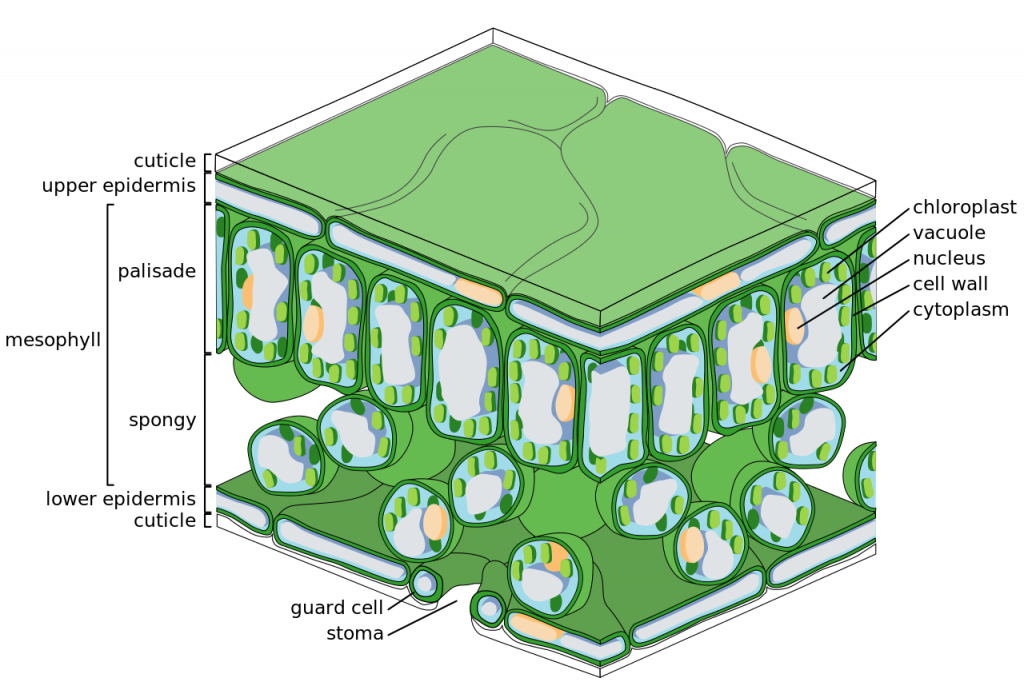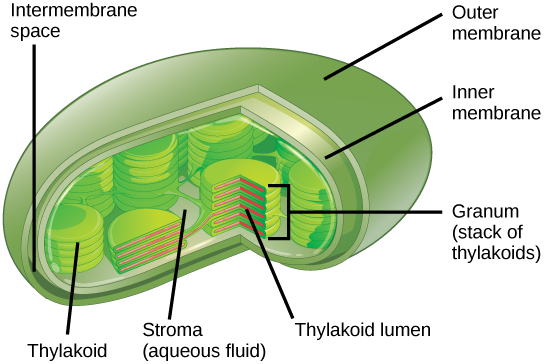The structure of the chloroplast
In plants, photosynthesis takes place primarily in leaves, which consist of many layers of cells and have differentiated top and bottom sides. The process of photosynthesis occurs not on the surface layers of the leaf, but rather in a middle layer called the mesophyll (Figure 1).

The gas exchange of carbon dioxide and oxygen occurs through small, regulated openings called stomata.

In eukaryotes, photosynthesis takes place inside an organelle called a chloroplast. Some prokaryotes can perform photosynthesis, but they do not contain chloroplasts (or other membrane-bound organelles). In plants, chloroplast-containing cells exist in the mesophyll. Chloroplasts are surrounded by a double membrane similar to the double membrane found within a mitochondrion. Within the chloroplast is a third membrane that forms stacked, disc-shaped structures called thylakoids. Embedded in the thylakoid membrane are molecules of chlorophyll, a pigment (a molecule that absorbs light) through which the entire process of photosynthesis begins. Chlorophyll is responsible for the green color of plants. The thylakoid membrane encloses an internal space called the thylakoid lumen or space. Other types of pigments are also involved in photosynthesis, but chlorophyll is by far the most important. As shown in Figure 3, a stack of thylakoids is called a granum, and the space surrounding the granum is called stroma (not to be confused with stomata, the openings on the leaves).

Just like the structure of the mitochondria was important to its ability to perform aerobic cellular respiration, the structure of the chloroplast allows the process of photosynthesis to take place. Both the light-dependent reactions and the Calvin cycle take place inside the chloroplast.
References
Unless otherwise noted, images on this page are licensed under CC-BY 4.0 by OpenStax.
Text adapted from: OpenStax, Concepts of Biology. OpenStax CNX. May 18, 2016 http://cnx.org/contents/b3c1e1d2-839c-42b0-a314-e119a8aafbdd@9.10

